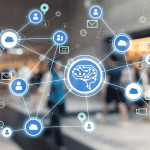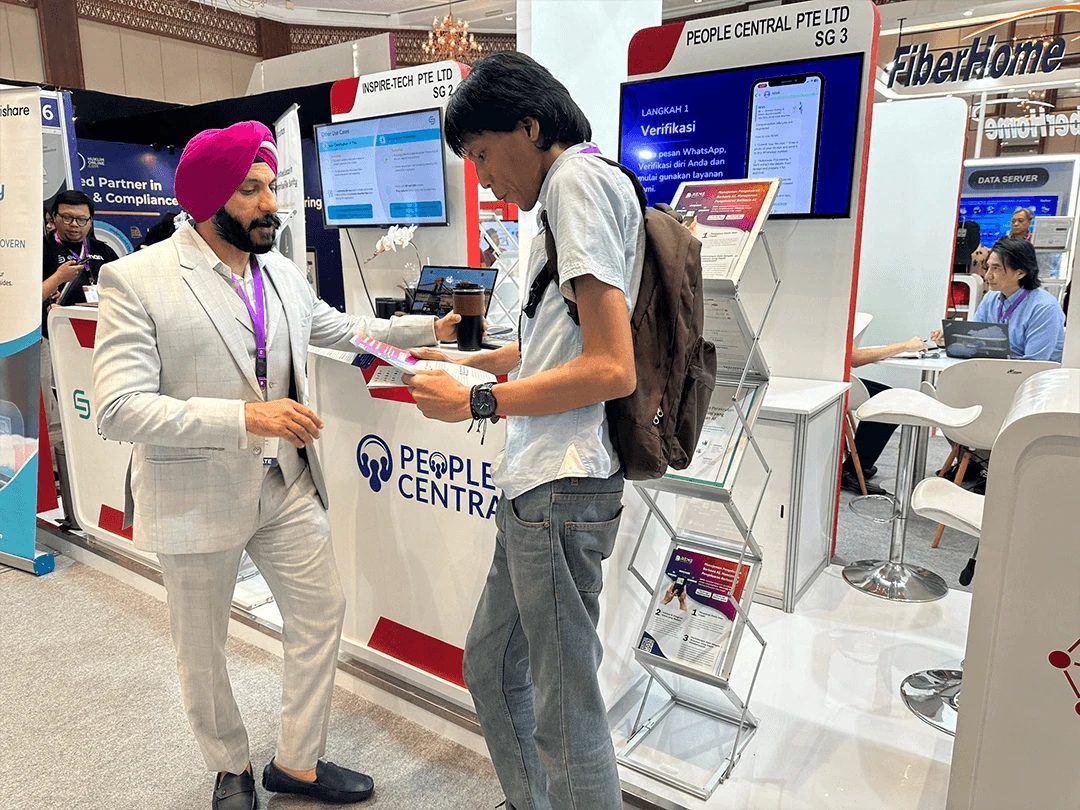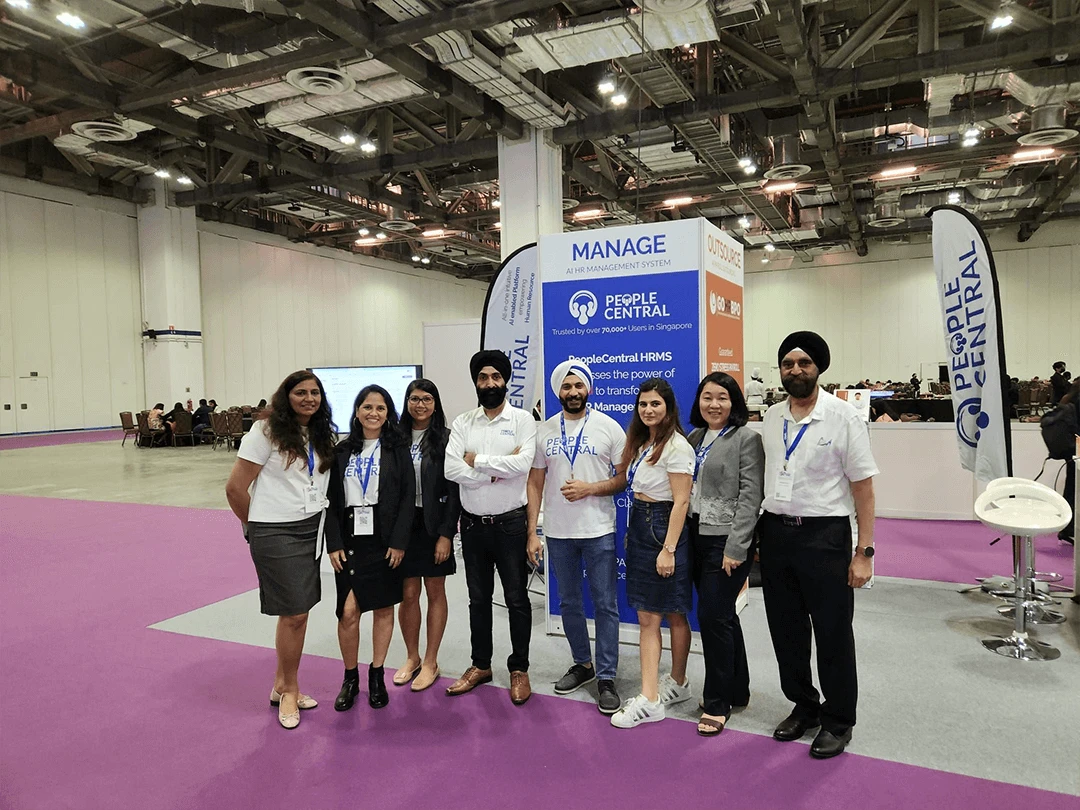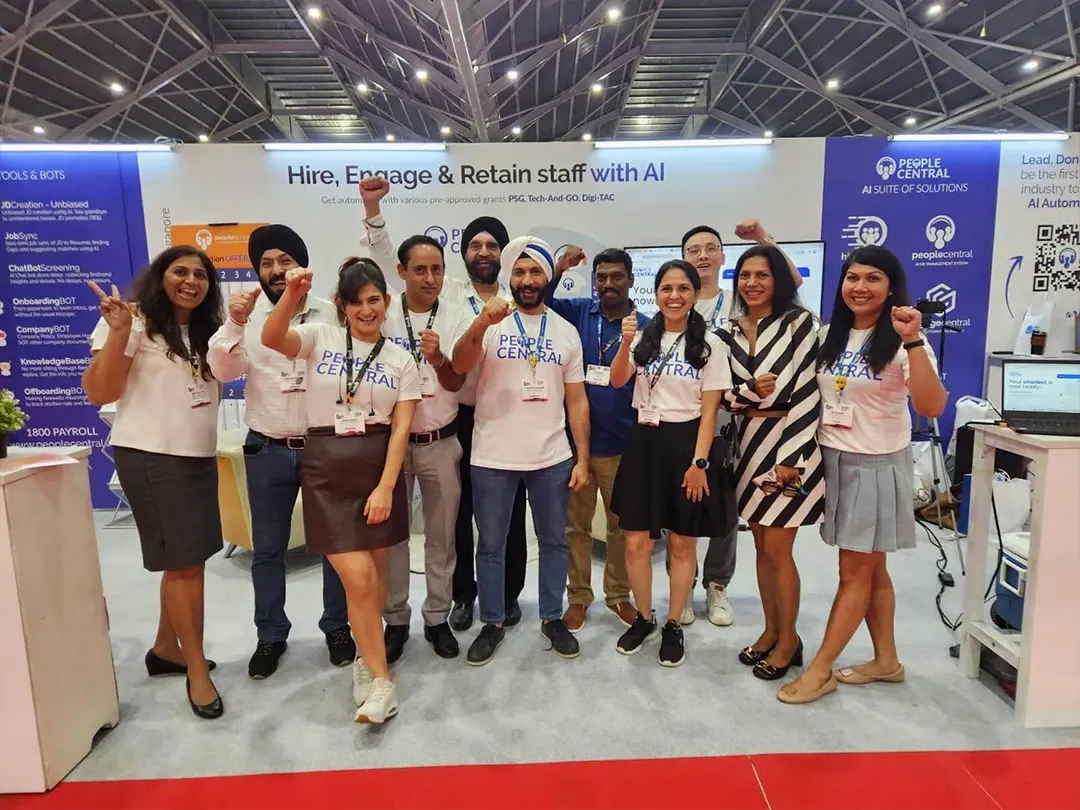Streamlining payroll processes is important for businesses to maximize efficiency and accuracy. Integrating AI with HR can revolutionize payroll operations, saving time and resources.
AI has changed many industries, and with HR/payroll, it can automate mundane tasks like data entry, calculations and record-keeping. This frees up HR professionals to focus on other strategic activities.
AI-powered systems can process data faster and reduce errors. They can analyze complex data sets, detect patterns, and generate accurate payrolls quickly. It would take a human much longer to do the same manually.
Integrating AI with HR can also improve compliance with labor regulations. AI tech can keep up with ever-changing laws and regulations, ensuring payroll processes stay within the boundaries.
Pro Tip: When using AI in payroll, have a strong data governance strategy. This includes security measures to protect sensitive info and transparency/accountability during system deployment.
Understanding Payroll Processes
To streamline payroll processes with AI and HR integration, this section will guide you through understanding the intricacies of payroll processes. Delve into defining payroll processes and uncover the challenges that come with traditional methods.
Challenges in Traditional Payroll Processes
Employees face many issues when it comes to traditional payroll processes. This could be anything from complex calculations to lack of transparency. Inaccurate or late payments, hard data entry, and difficulty in tracking hours are just some of the problems.
Dealing with paperwork and manual processes takes time and can lead to errors. Also, people may not understand their pay stubs or pay codes. This lack of clarity can cause disputes between management and staff.
Outdated systems are a major challenge for employers and employees. This includes old software, incompatible systems, or inadequate resources. All of these make it hard to effectively manage payrolls, decreasing productivity and increasing the risk of violations.
A small business owner shared their experience with traditional payroll processes. They had outdated software, resulting in delays. This made employees unhappy, as they depend on timely payments. This caused a drop in morale and productivity.
Businesses must understand the challenges of traditional payroll processes. This helps them to identify areas for improvement. Automated payroll systems and outsourcing services can help to overcome these obstacles, leading to smoother operations and happy employees.
To streamline payroll processes with AI and HR integration, dive into the introduction of AI and HR integration. Understand the power of Artificial Intelligence (AI) and the importance of HR integration. Explore how these components work together to transform and optimize payroll procedures.
Explaining Artificial Intelligence (AI)
AI is the simulation of human intelligence in machines. It involves developing computer systems that can think and act like humans. AI has been a topic of research for many decades, with the aim to make intelligent machines that can do complex tasks with accuracy. AI utilizes various technologies and algorithms such as machine learning, natural language processing, robotics, and computer vision.
It has the capability to learn and improve from experience. This has revolutionized many industries. AI dates back to the 1950s when researchers began exploring the concept of creating an artificial brain. Progress was slow due to lack of data and limited computational power. However, advancements in technology opened up new possibilities for AI research.
Understanding HR Integration
HR integration is essential to AI adoption in workplaces. It involves blending AI technology with traditional HR processes to boost efficiency and decision-making. Automating routine tasks like candidate screening and employee onboarding saves time and resources, maintaining accuracy and fairness.
To comprehend HR integration, one must understand its components. Data integration is one such part. It merges data from different sources, like applicant tracking systems and performance management tools. This gives HR professionals access to comprehensive employee information, leading to better insights and decisions.
Integrating AI-powered tools into existing HR systems is another component. An example is a chatbot integrated into a recruitment portal to assist candidates and answer questions. Enhancing candidate experience and freeing up HR staff for more strategic tasks.
XYZ Corporation used AI in their recruitment process. They created a chatbot using natural language processing algorithms. The chatbot screened resumes and conducted initial interviews, reducing manual screenings by 80%. Recruiters had more time to focus on value-adding activities. Candidates enjoyed the quick response and personalized experience.
Benefits of Streamlining Payroll Processes with AI & HR Integration
To maximize the benefits of streamlining payroll processes with AI & HR integration, dive into the advantages it provides. Achieve increased accuracy and efficiency, significant time and cost savings, as well as enhanced data security. Each of these sub-sections will serve as a solution to optimize your payroll operations and deliver seamless results.
Increased Accuracy and Efficiency
AI and HR integration can supercharge payroll processes! Automated calculations and data analysis, enabled by AI tech, minimize manual errors and save time.
1. AI algorithms can do complex calculations quickly and accurately, reducing the risk of mistakes. Plus, they can cross-reference employee info with various databases to make sure payroll factors are correct.
2. AI-powered payroll systems automate routine tasks, like data entry and report generation. This means less manual intervention, leaving HR personnel to focus on other strategic initiatives that grow the business.
3. Streamlined payroll processes also lead to increased efficiency. Automating tasks like time tracking, wage calculations, and tax deductions, HR departments can save a lot of time each pay period. This increases efficiency and brings cost savings too.
Pro Tip: When implementing AI in payroll processes, train and test thoroughly to guarantee accurate results while keeping data secure.
Time and Cost Savings
AI and HR integration for payroll processes offer big advantages in terms of time and cost savings. Repetitive tasks like data entry and calculations can be automated – saving precious time and decreasing the chance of mistakes that can lead to massive penalties.
Integrating payroll with HR systems also makes data sharing and collaboration super easy. No manual data transfers are necessary, so HR managers can quickly access payroll info and make changes without going through several channels.
Automated payroll processes lower admin costs associated with manual processing. AI algorithms do the taxing stuff like tax calculations, deductions, and compliance requirements – so no need to hire extra staff.
XYZ company implemented AI technology for their payroll processes. Before the integration, they wasted hours manually inputting employee data and calculating salaries. Plus, errors caused delays in payment.
But after integrating AI with their HR system, the company saw huge improvements in efficiency. Streamlined processes cut the time consumed on manual tasks and errors were almost eliminated.
In conclusion, streamlining payroll with AI and HR integration is a real game changer for businesses wanting to save time and money. Automating repetitive tasks and ensuring correct calculations allows companies to focus on more strategic initiatives, while optimizing their payroll operations.
Enhanced Data Security
AI and HR integrated into payroll processes boosts data security. Complex algorithms and strong encryption keep sensitive employee info safe from cybercriminals. Automating payroll operations lessens the risk of manual data handling.
This integration also increases efficiency and decreases data breaches’ chances. Security measures protect information including SSNs, bank details, and salaries. Multi-factor authentication protocols add another layer of protection. Regular audits and software updates identify vulnerabilities and reduce potential risks.
Organizations can use secure cloud-based storage solutions for payroll data. Advanced encryption and secure access controls protect sensitive info. Regular data backups guarantee availability, even in case of hardware failure or disaster.
Steps to Streamline Payroll Processes with AI & HR Integration
To streamline payroll processes with AI and HR integration, take these steps: Assess current payroll processes, identify suitable AI technologies and HR systems, integrate AI with HR systems, conduct testing and training, and continuously monitor and optimize the processes.
Assessing Current Payroll Processes
Payroll processes are pivotal in any organization. Assessing them is paramount to spot areas for improvement. Examining efficiency, accuracy, and compliance of processes is key to streamline payroll operations.
Analyzing the overall workflow from start to finish can help evaluate payroll processes. This includes seeing how employee data is gathered and entered into the system, how hours are logged and calculated, and how deductions are worked out. This helps identify issues that may cause delays or errors.
Another factor to consider is compliance with applicable laws and regulations. Necessary taxes need to be deducted accurately, employee benefits must be properly administered, and payroll records should comply with legal requirements. Auditing regularly can help spot any non-compliance and institute corrective measures.
Organizations can also use technology to streamline payroll processes. An integrated HR and AI system can automate many tasks like data entry, calculations, and reporting. This reduces manual errors and saves time, improving overall efficiency. Moreover, it enhances data accuracy and gives employees access to pay information.
To further refine payroll processes, organizations should adopt standardized policies and procedures. Clear guidelines for processing payrolls ensure consistency across all departments or locations. Training sessions can help employees understand the importance of following these procedures and diminish the odds of errors.
Identifying Appropriate AI Technologies and HR Systems
AI tech and HR systems are key to streamlining payroll. The right ones must be chosen for an effective system. Research the different AI and HR systems available in the market. Consider options such as AI-powered chatbots, ML algorithms, and data analytics tools to automate payroll tasks. Make sure the tech is compatible with existing HR systems used by the org. Get advice from industry experts or HR pros experienced in AI tech integration into payroll processes.
Pilot test different AI tech and HR systems before full implementation. Evaluate performance, reliability, and scalability. Prioritize choosing AI tech and HR systems with seamless integration. Consider outsourcing payroll functions to specialist service providers.
Follow these steps and get expert opinions to streamline payroll processes, improve accuracy, and boost efficiency.
Integrating AI with HR Systems
AI integration with HR systems offers numerous benefits. Tasks like calculating wages, managing benefits, and tracking attendance can be automated. This reduces manual errors and saves time for HR professionals, allowing them to focus on more strategic initiatives.
Machine learning algorithms can analyze historical data and predict employee behavior. This helps organizations make informed decisions about compensation and workforce planning. AI integration also contributes to improved employee experience. Chatbots powered by natural language processing can answer common queries instantly and accurately. This 24/7 accessibility enhances employee satisfaction and reduces the workload of HR personnel.
AI in HR systems offers advanced analytics capabilities. It can analyze data from sources like performance evaluations and training records to provide valuable insights into employee performance and identify areas for improvement. This helps organizations tailor their training programs and career development plans.
Gartner reports that AI integration with HR systems can reduce payroll errors by up to 90% and processing time by 50%. This translates into cost savings for businesses and increased satisfaction for employees.
Testing and Training
Testing AI algorithms involves running scenarios to validate accuracy. This helps spot mistakes and lets the system learn from past data. To train the AI system, organizations give it lots of payroll data like employee info, tax rules, and company policies. AI can then calculate salaries, deductions, bonuses, and taxes correctly.
Organizations can also set up a feedback loop for HR pros to review the system’s performance. This helps the system improve over time. Additionally, benchmarks, such as accuracy rate, time saved, and error reduction, should be set to measure performance. Regular audits can identify any potential gaps that need to be addressed. Doing this helps organizations maximize AI benefits while minimizing risks.
Continuous Monitoring and Optimization
AI-powered analytics tools can be leveraged to achieve continuous monitoring and optimization. These tools scan payroll data in real-time, finding patterns, trends, and anomalies that need attention. By proactively monitoring payroll, errors, discrepancies, and compliance issues can be immediately detected and fixed.
Continuous monitoring helps organizations identify bottlenecks or inefficiencies in payroll workflows. Tracking KPIs like processing time, error rates, and employee satisfaction with the payroll system will reveal areas that need improvement. This data-driven approach helps HR departments optimize processes and allocate resources.
Regular feedback loops are also crucial for continuous optimization. Feedback from employees involved in the payroll process gives a holistic view, enabling HR departments to identify areas for improvement.
Continuous monitoring and optimization makes payroll smoother and contributes to better employee experiences. Accurate, timely payments make employees feel valued and appreciated, which fosters a positive work culture.
Potential Challenges and Solutions
To tackle potential challenges in streamlining payroll processes with AI and HR integration, address staff resistance and training needs, ensure data privacy and compliance, and resolve technical issues.
Staff Resistance and Training Needs
Staff resistance and training needs can be a potential challenge when implementing new initiatives. To ensure successful adoption and use, it’s important to tackle any lack of enthusiasm or skills among staff.
Engage staff by talking to them clearly and involving them in the decision-making process. Tailor training for individual needs, including technical and soft skills. Offer ongoing support and resources after training to reinforce learning. This could involve mentoring, peer-sharing, and user-friendly tools.
As an example, a global company implemented a digital transformation project. Though the top management was enthusiastic, staff showed varied levels of resistance due to fear of change and job security worries. To address this, the company organized comprehensive training sessions that focused on technical aspects and the positive impact on job roles and growth.
Understand that staff resistance is a valid concern. Address their training needs to boost engagement, make implementation of new initiatives smoother, and contribute to the success of organizational goals.
Ensuring Data Privacy and Compliance
Technology is advancing, so data privacy and compliance are crucial. Organizations must protect sensitive info and meet legal requirements. This includes strong security measures, like encryption and access controls, to stop unauthorized access or data breaches. They need to set clear policies and procedures for data collection, storage, and sharing. Audits and assessments should be done to find any system weaknesses and take action.
Data privacy and compliance needs ongoing education and training. Employees must know their data protection responsibilities and follow regulations. They should understand the importance of secure personal information, identify phishing attempts, and use strong passwords. Providing training and resources on data privacy best practices can make a culture of awareness that promotes compliance.
Organizations must stay up-to-date with data privacy and compliance regulations. Laws like the GDPR in Europe keep changing, so businesses must update their practices. Not complying could lead to fines and damage reputations. So, staying informed with reliable sources is essential.
| A study by PricewaterhouseCoopers found 94% of companies prioritize data protection compliance due to financial penalties and reputational risk. |
|---|
Data privacy can be hard for organizations with ever-changing tech and regulations. But, implementing security measures, providing education, and staying updated on laws can help them protect customers’ personal information.
Addressing Technical Issues
Addressing technical issues is key for a system or process to run smoothly. This involves solving software, hardware, or network infrastructure problems. Effective troubleshooting techniques and tools are needed to manage these difficulties.
When dealing with technical issues, a systematic approach is necessary. Start by getting info on the problem, such as error messages or logs. This will help narrow the possible causes and find appropriate solutions. Analyzing the root cause is important to avoid the issue happening again.
Collaboration is also vital for addressing technical issues successfully. Involving experts from different domains can provide valuable insights and different points of view. Good communication within the team ensures everyone understands the problem and its potential solutions.
Organizations should invest in training programs to improve technical skills among their employees. Learning and upskilling helps individuals stay up-to-date with the latest technologies and best practices. This allows them to tackle complex technical issues confidently and competently.
Here’s an example that shows how important it is to address technical issues quickly. A multinational company had a major system outage caused by a missed software update. It resulted in large financial losses and damaged their reputation. However, they learned from this and implemented robust processes for timely updates and thorough testing in the future.
Conclusion
AI and HR integration can simplify payroll processes. Automating tasks, reducing errors, and providing insights? All benefits of adopting these technologies. Self-service pay stubs, tax info, time off requests? Employees enjoy that! Data sharing between departments? No manual entry & fewer errors.
AI and HR integration – revolutionize processes, increase efficiency, reduce costs, and boost employee satisfaction. Don’t miss out on the opportunity to optimize payroll processes. Take action now to explore the potential of AI and HR integration. Improve accuracy, save time, & boost employee satisfaction – embrace the future of streamlined payroll with AI today!
FAQs
Ques 1. What is the significance of streamlining payroll processes with AI and HR integration?
Ans 2. Streamlining payroll processes with AI and HR integration offers numerous benefits such as automation of manual tasks, reduction of errors, improved accuracy, increased efficiency, and enhanced compliance with regulatory requirements.
Ques 2. How does AI contribute to streamlining payroll processes?
Ans 2. AI technologies, such as machine learning algorithms, can automate data entry, data validation, and report generation tasks involved in payroll processing. AI systems can also detect patterns and anomalies in data to identify potential errors or risks.
Ques 3. What are the advantages of integrating HR with payroll processes?
Ans 3. Integrating HR with payroll processes ensures seamless transfer of employee data, simplifies onboarding and offboarding procedures, enables accurate calculation of wages, facilitates benefits administration, and enhances overall workforce management.
Ques 4. Can AI and HR integration improve payroll accuracy?
Ans 4. Yes, by eliminating manual data entry errors and leveraging AI-powered algorithms, the integration of AI and HR can significantly improve payroll accuracy. The system can also flag potential discrepancies or inconsistencies for human review, reducing the chances of errors going unnoticed.








 5
5


























